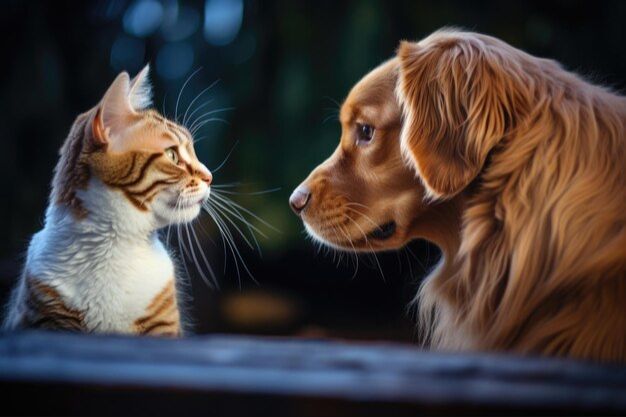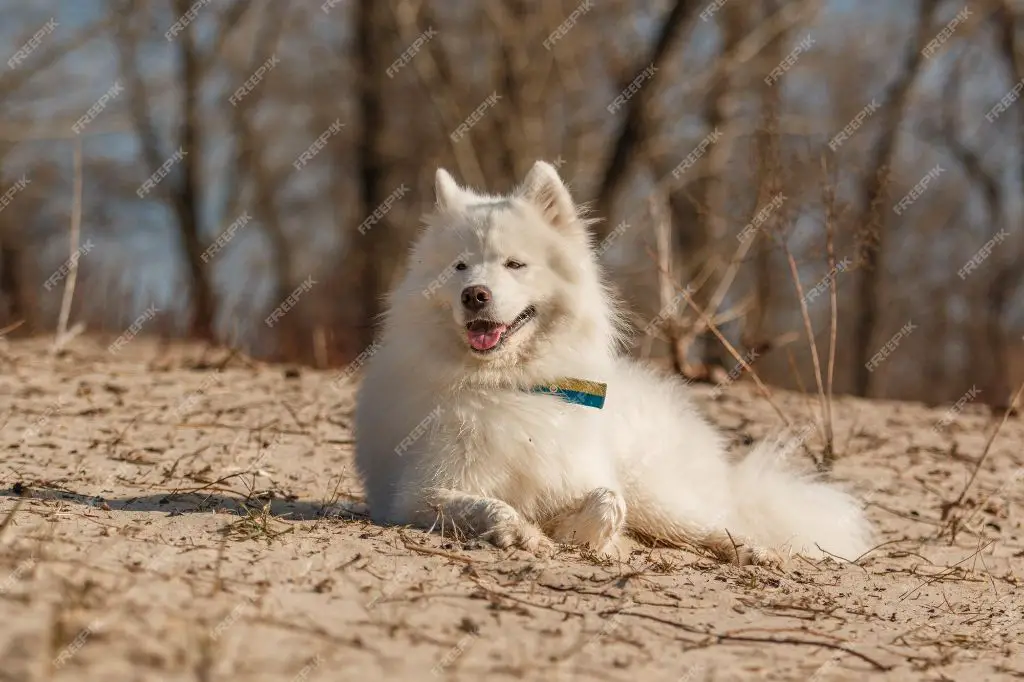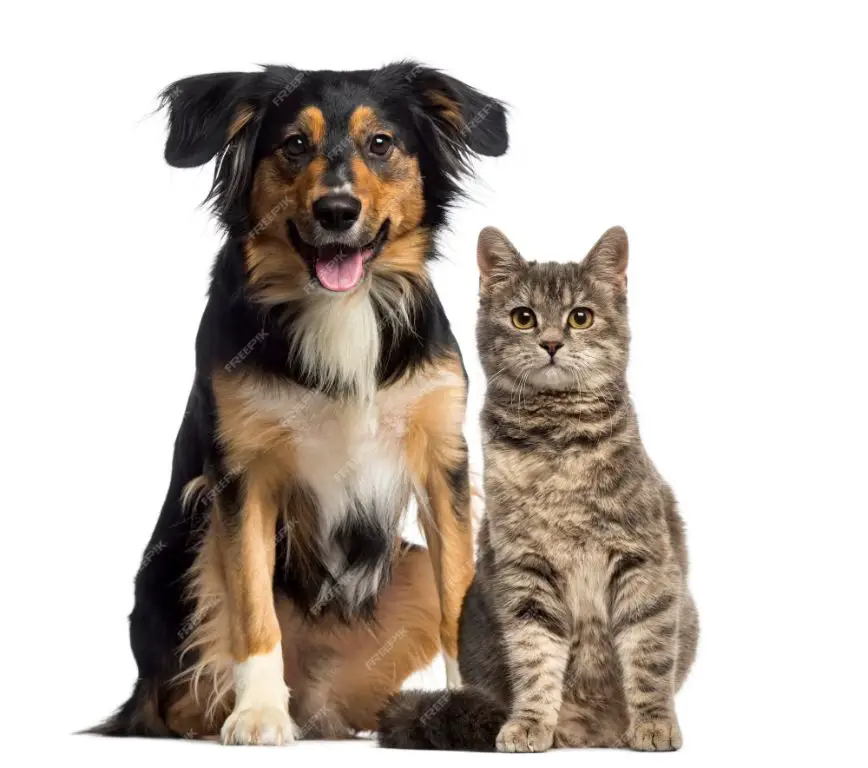Introduction
Pronouns are words that take the place of nouns. When referring to animals like cats and dogs, there are several pronoun options people commonly use, including he/she, it, they, proper names, and made up words. The most appropriate pronoun to use often comes down to the animal’s gender, the owner’s preference, anthropomorphism, grammatical correctness, and cultural context.
This article will explore the various pronoun options for cats and dogs, when each one may be suitable, and things to consider when deciding which pronouns to use for a particular animal.
He/She
Traditionally pets like cats and dogs have been referred to using gendered pronouns like “he” and “she.” This goes back centuries as a way to indicate the biological sex of an animal. People would default to “he” for male pets and “she” for female pets as a form of grammatical correctness and to anthropomorphize pets with human attributes. Using gendered pronouns was seen as more personal than calling a pet “it,” which can seem impersonal and cold. The tradition of using he/she for pets became commonplace in English language and culture.
However, the use of gendered pronouns for pets has come under scrutiny in recent decades as ideas about gender identity evolve. Referring to pets based solely on their biological sex at birth is seen by some as reinforcing outdated binary gender norms. The emphasis on pronouns matching biological sex rather than gender identity has become controversial. Still, the practice persists as grammatical convention and a way for pet owners to personalize their relationships with their cats and dogs. But the gender debate has complicated the he/she pronoun tradition for pets like it has for people. There are no easy rules anymore about assigning pronouns based only on biological categories. The entire approach is being re-examined in the 21st century.
It
Using ‘it’ as a pronoun for pets is grammatically correct, but can come across as impersonal or even demeaning. ‘It’ is traditionally used for objects or non-human entities rather than sentient beings like pets. While some pet owners prefer ‘it’ for the grammatical correctness or because they view their pets more like property, many frown on calling a cat or dog ‘it’ as it can imply a lack of warmth or personal connection.

Linguistically, ‘it’ is the proper pronoun to use when referring to animals or pets in the third person. Since cats and dogs are not human, using ‘he’, ‘she’, ‘they’, or a proper name is technically anthropomorphizing the pet by assigning human traits. However, the English language evolves, and modern conventions show a clear preference for humanizing pets with personal pronouns, especially as pets are increasingly seen more like family members.
There are cultural differences in the use of ‘it’ for pets as well. Some languages like Mandarin lack distinct ‘he’ and ‘she’ pronouns, so ‘it’ would be standard for all animals. But in English, the use of ‘it’ for a pet can imply emotional distance, while ‘he’ or ‘she’ shows a closer bond. Ultimately the choice comes down to the owner’s preference and views on pets.
They
The use of “they” as a gender neutral singular pronoun for pets has become increasingly common. This reflects a broader societal shift toward gender neutral language and recognition that binary gender terms like “he” and “she” are not always applicable or appropriate.
Referring to a pet as “they” avoids making assumptions about the animal’s gender based on appearance or name. It also acknowledges that gender identity may be fluid and exists on a spectrum beyond just male and female for some animals.
Using “they” as a pronoun for pets can be useful in several situations:
- When the pet’s biological sex is unknown.
- When the pet’s name or appearance does not clearly indicate gender.
- When the owner wishes to keep the pet’s gender private.
- When the pet’s behavior does not conform to traditional gender norms.
- When the owner rejects binary gender classifications for their pet.
Some pet owners prefer “they” out of respect for their animal’s autonomy and desire to not impose human gender constructs. Others simply view it as a convenient gender neutral option. Either way, using “they” avoids misgendering a pet and reinforces that animals have their own sense of self.
Proper Names

Using your cat or dog’s proper name can be more personal than using a pronoun. Calling them by name shows that they are an individual with their own identity, rather than just an animal or pet. It creates a deeper bond when you address them directly. If you’ve chosen a specific name for your furry friend, take the opportunity to use it. Say “Good morning, Miles!” or “Dinnertime, Lulu!” or call them over with “Here, Bailey!” Using their given name recognizes their uniqueness.
Proper names also avoid any confusion that could arise from pronoun use. If you live in a multi-pet household, saying “he wants to play” or “she’s hungry” may not communicate which one you are referring to. Using your pets’ names eliminates any ambiguity. For example, “Shadow wants to play but Mittens seems tired.” Additionally, proper names sidestep any debates over pronouns and gender identity when it comes to animals.
So consider using your cat or dog’s actual name as a more personal and unambiguous alternative to pronouns. It shows you see them as the individual they are.
Owner Preference
When referring to a pet, many owners have a preference for which pronouns they use. Some owners always use “he” or “she” when referring to their pet, even if the animal’s sex is unknown or not applicable (as with some pets like fish). Other owners prefer to use gender neutral pronouns like “they.” Still others may opt to use “it”, either out of personal preference or because they view their pets in more utilitarian terms.
There is no right or wrong answer, and the choice of pronouns ultimately comes down to each owner’s relationship with their pet. The pronouns people use when talking about their pets can reflect how they view their pets in terms of gender, personality, and role within the family. Respecting each owner’s individual preferences is important.
Anthropomorphism
Many pet owners anthropomorphize, or attribute human traits and characteristics to their pets when speaking about them. This includes using he/she pronouns when referring to pets, especially cats and dogs. When owners use “he” or “she” for a pet, it shows that they think of their pet almost like a child or family member rather than just an animal.
Using human pronouns for pets reflects the close emotional bonds that can form between owners and their cats and dogs. An owner who says “she misses me when I’m at work” is imagining their pet has a human range of emotions and attachment. Referring to a pet as “he” or “she” indicates seeing pets as individuals with their own personalities, likes and dislikes.
While grammatically incorrect, using he/she for pets acknowledges the depth of feeling and relationship between owner and pet in a way saying “it” does not. The choice to anthropomorphize pets through pronouns shows the care and affection owners feel, even if pets do not actually have human traits.
Grammatical Correctness

When it comes to pronouns for pets, grammatical correctness is often debated. Traditionally, using “it” has been considered the grammatically correct pronoun for animals. This is because “it” is used for inanimate objects and animals are not human. However, grammar rules have evolved and many style guides now accept using “he” or “she” for pets.
Using “he” or “she” for a pet is considered a personification – attributing human traits to a non-human subject. Personification is very common in writing and speech, so using gendered pronouns for pets has become widely accepted grammatically.
That being said, some grammar purists still insist that “it” remains the technically correct pronoun for animals, since they are not people. But the grammar rules are often overruled by the desire to personalize pets, hence the predominance of “he” and “she.”
Ultimately, there is flexibility when it comes to pronouns for pets. While “it” has traditionally been the grammatically correct option, using “he” or “she” is now commonly accepted as grammatically correct as well.
Cultural Differences
The pronouns used for pets can vary across cultures and languages. In English, most pet owners default to “he” or “she” based on the pet’s sex. However, other languages handle pronouns differently.
For example, in Spanish, the word for “dog” (perro) is masculine while the word for “cat” (gata) is feminine. So Spanish speakers would refer to a dog using the masculine pronoun él and a cat using the feminine pronoun ella.
In Mandarin Chinese, there are specific gender-neutral pronouns used for animals like tā. Pet owners would use this for both male and female pets instead of gendered pronouns.
The choice of pronoun may also relate to views on anthropomorphism and gender roles that differ across cultures. Some languages lack gendered pronouns entirely. Overall, there is no universal standard, and pet pronoun usage varies globally.
Conclusion
In summary, pronouns used for cats and dogs often depend on the preferences of the owner. Many owners default to gendered pronouns like “he” or “she,” which can correctly indicate the pet’s biological sex. However, some owners prefer the gender-neutral pronouns “they/them” or even “it.” There are no hard grammatical rules, though “it” is considered by some to be impersonal or demeaning. Using proper names is also common and avoids any pronoun debate entirely.
Anthropomorphism, or attributing human traits to non-human entities, explains why owners feel inclined to use pronouns like “he” and “she.” Cats and dogs take on humanized roles in the family. However, others argue that gendered pronouns reinforce problematic gender stereotypes when applied to pets. Neutral terms like “they” offer an alternative that doesn’t prescribe social roles and norms.
In the end, choose pronouns based on your personal preferences and what feels right for your relationship with your pet. Language and conventions evolve, so be respectful of others’ choices. Focus on conveying the love between pets and owners, whatever pronouns you use.
